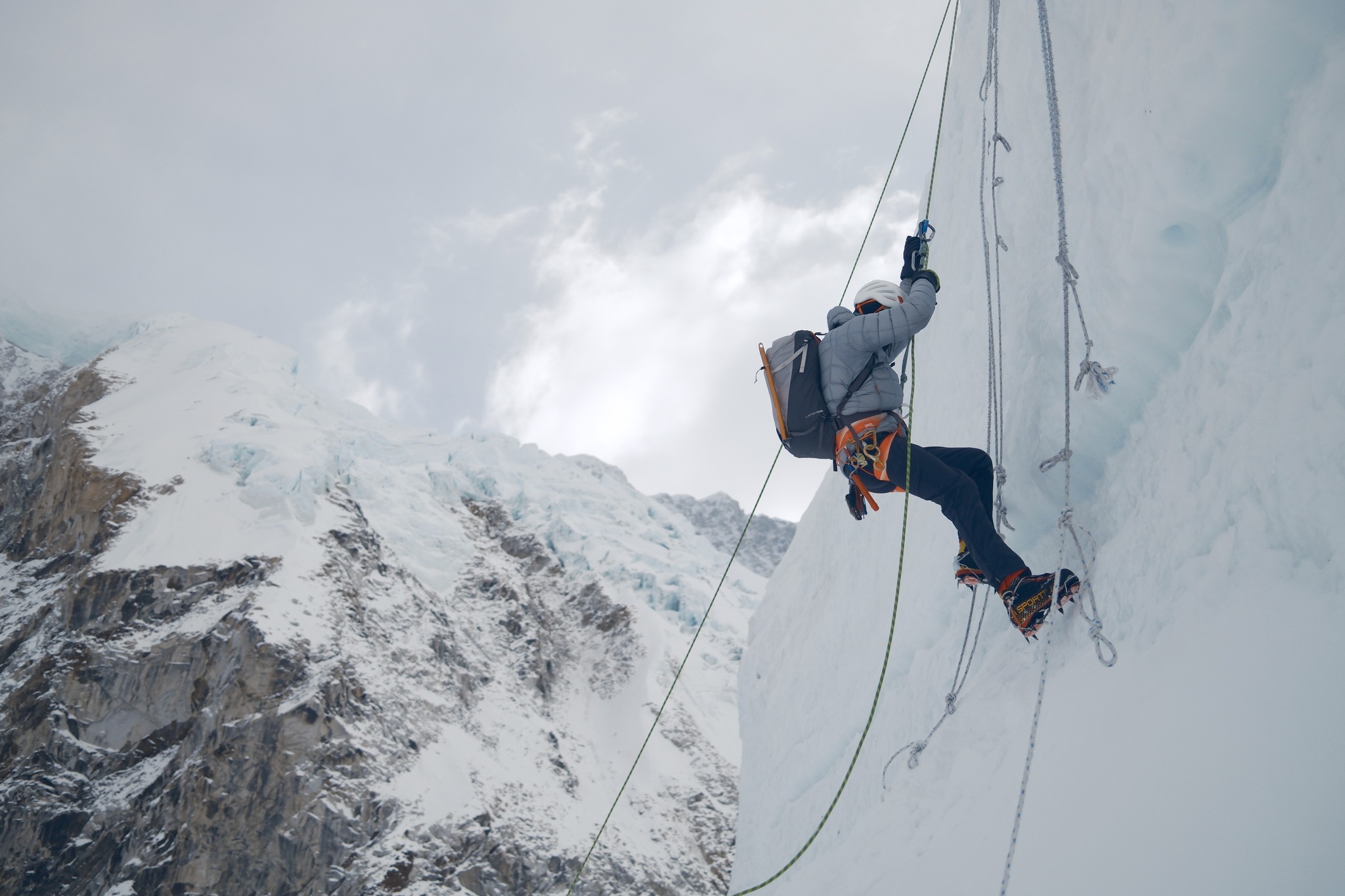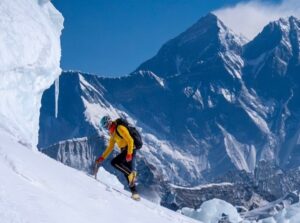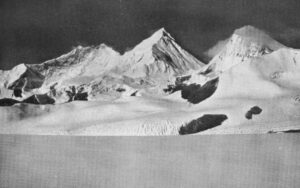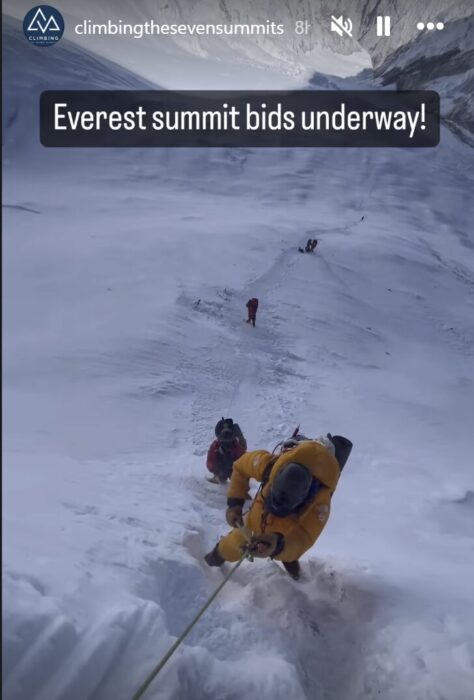
Everest teams are on the go. Photo: Climbing The Seven Summits/Instagram
Lukas Furtenbach’s teams on both sides of Everest will go up in the next few days. “They might meet on the summit,” he said.
Speed climbers and no-oxygen
“About 700-1000 people are expected to summit in the next few days,” Karl Egloff of Ecuador posted on social media. Like Tyler Andrews of the U.S., he intends to attempt an FKT (Fastest Known Time) on Everest without supplemental oxygen.
He and Andrews are not in direct competition, since Andrews is attempting a one-way; he stops timing at the summit. Egloff will speed both up and down and measure his total time back at Base Camp.
On Instagram today, Andrews says that he will make his second attempt “after May 18.” Egloff will also wait until the main wave of climbers passes.
“[I hope] to climb at the end of the month, without masses, traffic, and with higher temperatures,” says Egloff.
Valeri Babanov, also climbing without oxygen but keeping a normal pace and with Sherpa support, is not so patient. He is back at Base Camp and about to head up after recovering downvalley from a respiratory illness for four days. Marcelo Segovia of Ecuador will also climb without bottled gas as soon as the weather allows.
Wingsuit fly ready
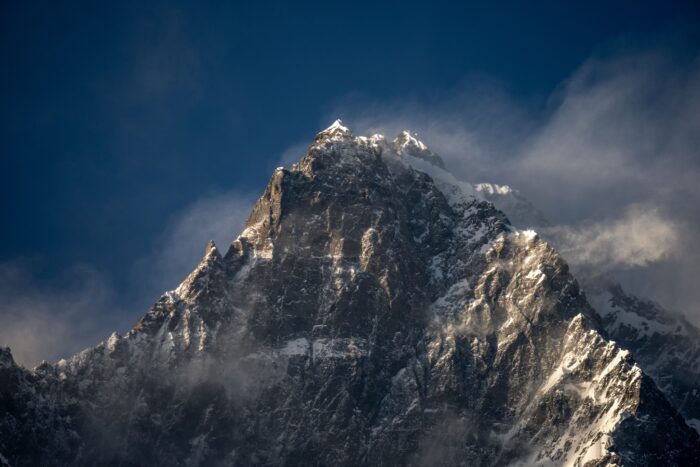
The summit ridge of Lhotse. Photo: Brodie Hood
Howell’s team has everything prepared: camps, oxygen, supplies, and ropes up to around 8,000m. At some point, the team will have to find a passage to the exit point.
“All that remains is 200 meters of unknown, technical climbing, and finding a suitable exit for Tim to jump,” Gupta said. “Then the weather has to play ball. We need low winds, no cloud, stability, and a narrow window to pull off something that’s never been done. If we can do it, it will be extraordinary.”
